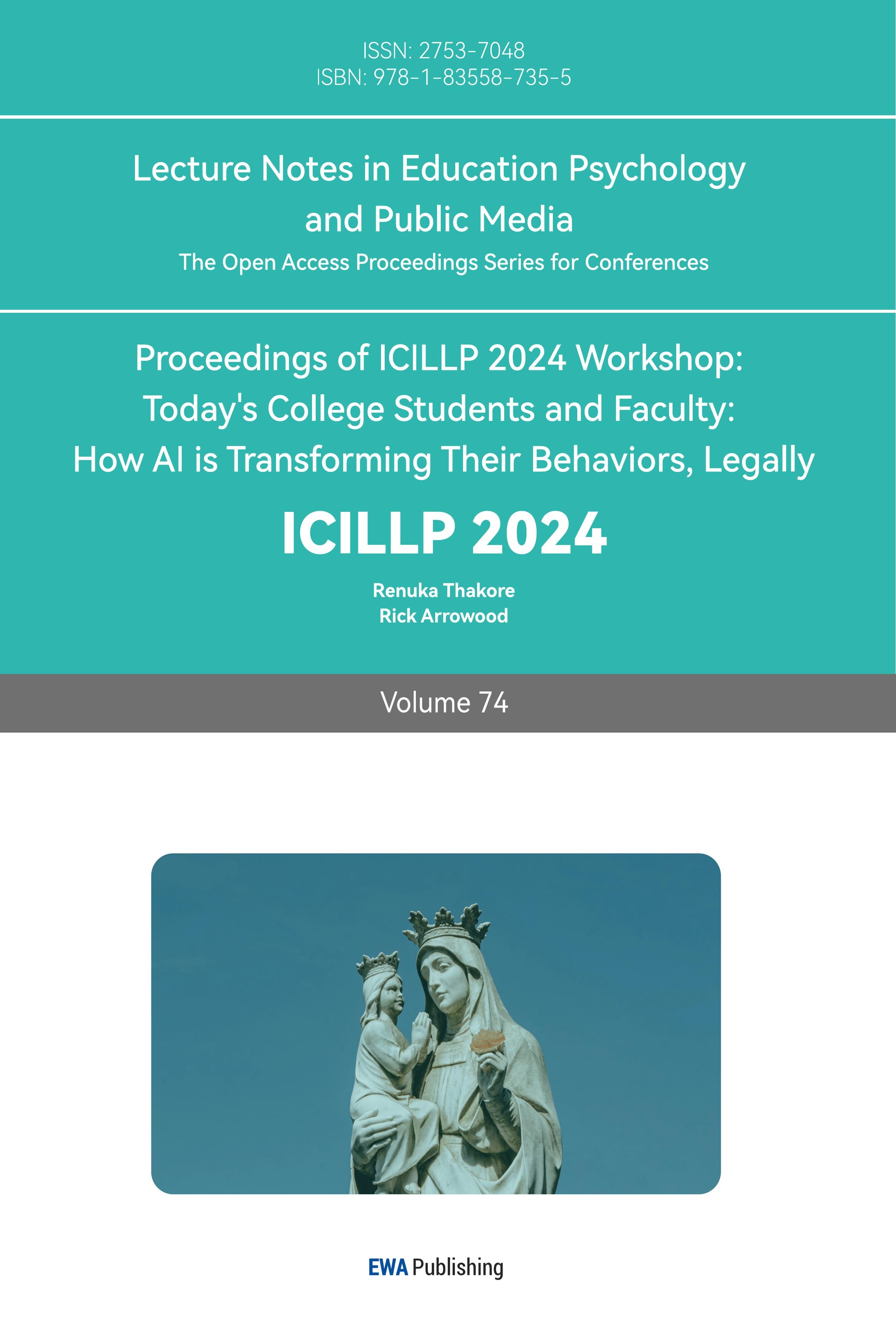1. Introduction
In recent years, the education sector has undergone increasing specialization, with the pre-service teacher stage playing a crucial role prior to teaching practice. Notably, ChatGPT signifies a significant breakthrough in text generation, and generative artificial intelligence is now advancing complex tasks associated with pre-service teacher learning, lesson preparation, and teaching. Utilizing generative AI to boost learning efficiency, expedite the lesson preparation process, and alleviate teaching loads has emerged as a pivotal concern in the field of education.
Forward-looking pre-service teachers anticipate that large language models, such as ChatGPT, Kimi, and Wenxin Yixin, will offer personalized and efficient guidance, suggestions, and feedback for their learning and teaching. Indeed, some pre-service teachers have already integrated these models into their daily routines. However, scholars have observed that AI is still underutilized in learning and teaching, particularly in the humanities [1]. Additionally, there are lingering questions about the widespread applicability of generative artificial intelligence, particularly ChatGPT, across the pre-service education industry, especially concerning learning methods and teaching strategies. Notably, empirical research exploring pre-service teachers' perspectives on the utility of generative AI in their education is limited.
It is worth noting that a part of research also documented the above views on the effect of generative AI on pre-service teachers [2]. For example, as pre-service teachers become increasingly interested in generative AI in professional fields, there are also criticisms. These include the potential decline in student cognitive engagement, potential errors in generative AI responses to user questions, plagiarism and concerns that could disrupt the original teaching approach [3,4]. Although these cautious approaches are noteworthy, due to the lack of empirical investigation of how generative AI can be used in pre-service teachers, research should review these early warnings for the application of generative AI in pre-service education on account of specific evidence [5]. Therefore, it is urgent to conduct empirical research to prove the practical application of ChatGPT in pre-service teachers.
To fill the above research gaps, this study specifically investigates how pre-service faculty adopt generative AI in their learning plans. Analyzing the test papers and teaching plans issued by the pre-service teachers is the key means to test whether the pre-service teachers have the professional level to teach the students [6]. Although there are a variety of views as to the way of auditing before teachers’ level, this study majorly concentrates on how the former teachers incorporate generative artificial intelligence into learning activities, survey before teachers in learning and teaching plan writing tendency of generative artificial intelligence and use, and the pre-service teachers will more actively use generative artificial intelligence. This is particularly meaningful for pre-service teachers because they are relatively active in integrating AI into learning and teaching compared with traditional teachers with a certain teaching age, but there are also cases of inappropriate use and inadequate preparation to meet the expected use. In general, the study examines the teaching of former teachers on how to generate artificial intelligence into learning courses and teaching plans, as well as for teachers on how to apply large language models in personalized and efficient learning and teaching and promote generative artificial intelligence in the beneficial promotion of teachers.
2. Literature Review
2.1. The Educational Qualities That Pre-service Teachers Should Have
Increasing cultural diversity has complicated the learning and teaching process for pre-service teachers, who must navigate the complexity and diversity of knowledge to make their own content choices, a task that is potentially less challenging for in-service teachers. Due to this complexity, pre-service teachers require a solid professional background that outlines what they can do and should teach in the classroom. Harris and Bain have illustrated the specific teaching content knowledge that pre-service history teachers need for world history courses, emphasizing the importance of certain curriculum knowledge to achieve curriculum objectives [7, 8]. Additionally, the need for pre-service teachers to master professional knowledge and develop disciplinary thinking and reasoning skills has become more pronounced. In the humanities, pre-service teachers must also pay attention to the transmission of inevitable values associated with humanistic education, as their value choices influence their selection of learning and teaching content [9].
2.2. The Advantages and Challenges of Generative AI Tools in Pre-job Education
Generative AI tools are capable of automatically generating teaching content tailored to students' needs and interests, thereby providing pre-service teachers with personalized and intelligent teaching services [10]. These tools further enhance the educational process by offering efficient, accurate, and timely feedback and evaluation, ultimately improving the quality and effectiveness of teaching and learning.
However, some challenges remain. For example, generative AI tools require a lot of data support and algorithm support, which may be difficult for pre-service teachers. In addition, generative AI tools also need to have certain algorithm knowledge and programming ability, which is also a big challenge for pre-service teachers.
2.3. Discussion and Views
Pre-service teachers exhibit a strong willingness to utilize AI tools in their teaching, despite encountering obstacles such as cognitive and technical challenges. Teachers from diverse disciplines, genders, and learning styles hold varying attitudes and perceptions towards generative AI tools. In order to address these issues and facilitate better use of AI tools by pre-service teachers, research has provided specific suggestions that aim to serve as valuable references for both the application and research of AI tools within the educational field.
3. Method
This study utilized data collected from an online anonymous questionnaire conducted at Qingdao University in Shandong, China, in September 2024. With professional pre-professional teachers as the research object, the scope of research objects spans the sophomore, junior, senior and graduate stages. Participation was entirely voluntary, and a total of 280 valid samples were collected, including 181 female participants, or 64.64%, and 99 male participants, or 35.36%. The study involved a total of 340 participants, including 102 sophomores (36.43%), 106 juniors (37.86%), 57 seniors (20.36%), and 15 graduates (5.36%). All participants possessed AI usage skills and teaching experience. Based on their experience with generative AI tools in teaching or learning, the participants were divided into two groups. A total of 151 participants (53.93%) effectively completed the questions related to the teaching or learning group (spanning questions 1-17), while 129 participants (46.07%) effectively completed a subset of these questions (specifically questions 1-5 and 12-17). The sample profiles of the participants are summarized in Table 1, providing a comprehensive overview of their backgrounds and experiences.
Table 1: Demographic data of participants (N = 280).
| Profile | Category | Frequency | Percentage(%) |
| Gender | Male | 99 | 35.36% |
| Female | 181 | 64.64% | |
| Grade | Sophomore | 102 | 36.43% |
| Junior | 106 | 37.86% | |
| Senior | 57 | 20.36% | |
| Postgraduate | 15 | 5.36% | |
| Major field | Preschool education | 131 | 46.79% |
| Primary education | 44 | 15.71% | |
| Secondary school and above education | 75 | 26.79% | |
| Other education-related majors | 30 | 10.71% | |
| Future planned teaching phase | Preschool | 87 | 31.07% |
| Primary school | 68 | 24.29% | |
| Secondary school | 102 | 36.43% | |
| Other forms of education (such as special education) | 23 | 8.21% | |
| Frequency of using GenAI tools | Daily | 13 | 8.61% |
| Several times a week | 51 | 33.77% | |
| A few times a month | 71 | 47.02% | |
| Occasionally use | 16 | 10.6% |
4. Result
4.1. Uses of GenAI in Pre-service Teachers
Pre-service teachers exhibit a high demand for generative AI tools prior to the teaching process, with a probability exceeding 50% of using these tools in teaching plan design, lesson preparation, and teaching courseware creation (see Figure 1). Among the study participants, 36.43% aim to teach in middle schools, where the extensive knowledge points make generative AI tools particularly useful for knowledge summary, sorting, and teaching content creation, with over half of the participants indicating a likelihood of using them for these purposes. Additionally, pre-service teachers recognize the advantages of generative AI technology in text generation and analysis, enhancing their self-efficacy in utilizing this technology. However, the utilization rate of generative AI technology for teaching evaluation and homework feedback analysis is below 30%, suggesting a lack of full trust in its application in the evaluation and feedback process among the participating pre-service teachers. Meanwhile, about 35% of them use AI tools in academic research, writing, literature analysis, textbook analysis, and other text analysis tasks (see Figure 2).
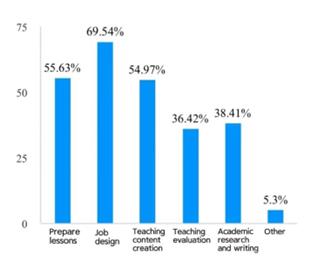
Figure 1: Scenario where pre-service teachers use generative AI tools
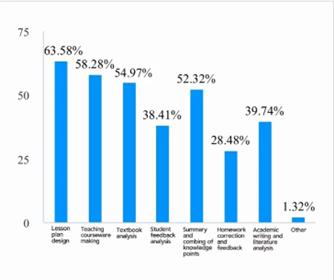
Figure 2: Some teaching or learning aspects that pre-service teachers would use.
4.2. Selection of GenAI Tools
In terms of generative AI tools, as Figure 4 shows, 60.26% of participants chose ChatGPT, 50.99% of participants chose Wen Xinyi, and the share of other tools was no more than 20%. As Figure 3 shows that the common advantages of the two tools are strong language processing ability, analytical ability and extensive knowledge reserve; sometimes inadequate accuracy and innovation. Participants said that ChatGPT has stronger cross-language and cross-cultural ability, and Wenxin has stronger customization ability and more localized content. Previous research has primarily concentrated on text generation and large-scale link analysis, whereas teachers, prior to reaching the graduate level, uniformly express a common requirement: the demand for text and its analysis. AI tools, exemplified by ChatGPT and Heart Word, exhibit remarkable language processing capabilities, making the utilization of generative artificial intelligence an efficient method to address the needs of pre-service teachers.
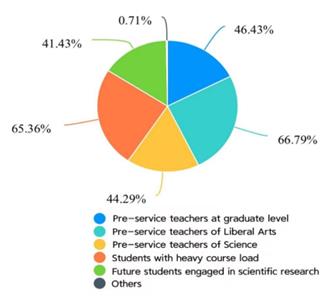
Figure 3: Groups that are more inclined to use generative AI tools considered by pre-service teachers.

Figure 4: Some generative AI tools commonly used by pre-service teachers.
5. Discussion
5.1. Technology Self-Efficacy
Self-efficacy refers to an individual's confidence in their capacity to plan and execute actions effectively for performance, and in this study, it is specifically defined as the confidence of pre-service teachers in their ability to skillfully utilize generative AI tools, termed technical self-efficacy.
Self-efficacy, which encompasses cognition, emotional control, and vocational skills adjustment, is crucial for completing pre-service learning and teaching tasks. Technical self-efficacy, specifically, aids individuals in correctly understanding technology and influences their attitude and tendency to use it [11]. This study demonstrated the pivotal role of technical self-efficacy in shaping the cognition of pre-service teachers towards generative AI technology and their evaluation of its usage difficulty, while also proving that technology self-efficacy significantly reduces technology anxiety among this group.
Figure 5 reveals that 52.98% of pre-working teachers are inclined to recommend generative AI tools, suggesting that they have had positive experiences, achieved favorable results, and possess confidence in both using and recommending these tools. This positive inclination reflects a sense of technical self-efficacy among these pre-service teachers.
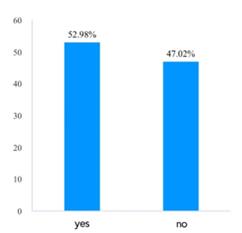
Figure 5: Whether pre-service teachers have actively recommended generative AI tools to teachers and classmates.
5.2. Advantages and Disadvantages for Pre-service Teachers
5.2.1. Advantages
A significant majority of study participants, 86.43%, believed that generative AI tools saved time, thereby enhancing teaching and learning efficiency to a certain extent. Furthermore, the introduction of generative AI ideas and methods spurred innovative thinking among the participants to a noticeable degree.
5.2.2. Disadvantages
According to Figure 6, 52.14% of participants express the belief that generative AI tools do not have a positive impact on personalized analysis and feedback. This perception stems from concerns that these tools may potentially weaken pre-service teachers' self-learning skills and may not be effectively reused for providing personalized feedback and analysis to students.

Figure 6: The most helpful aspects of generative AI that are considered by pre-service teachers.
5.3. GenAI Anxiety
Part of the participants in this study said, they have a certain generative artificial intelligence tool anxiety, mainly divided into the following points: the first is the ability to anxiety, as mentioned above part of the pre-service teachers worry about using generative artificial intelligence tools will make them lose a certain degree of self-learning ability, interact with students' enthusiasm is low, so that the classroom quality is reduced. Followed by the use of anxiety, some pre-service teachers use generative artificial intelligence tools, which not only did not save their learning time but to a certain extent, reduced their efficiency. Due to the need to generate artificial intelligence tools to understand and master the degree, different generative artificial intelligence tools have certain technical operation complexity, and parts of generative artificial intelligence tools have certain authority and cost. For pre-service teachers, effective use of generative artificial intelligence tools. To mention generate the effect of artificial intelligence tools and accuracy of anxiety, 42.56% of participants believe that generative artificial intelligence tools knowledge error probability is larger, in other words, generative artificial intelligence tools need some training, if not training, the big language model is prone to a certain degree of error, bring trouble for participants, in participants concept is professional is not a strong impression. Environmental anxiety, due to the generative artificial intelligence tools being widely used, pre-service teachers will worry about their generative artificial intelligence tool utilization will lag behind others, sometimes mentor or school recommendation will produce use anxiety for them. Finally, there is the anxiety of ethics and academic integrity brought about by the use of generative AI tools. Some universities and organizations attach great importance to the utilization rate of generative AI in academic aspects, so some pre-service teachers do not use generative AI tools out of careful consideration.
Table 2: Major factors influencing pre-service teachers’ use of generative AI tools.
Profile |
Percentage(%) |
Lack of understanding |
65% |
Operational complexity |
61.07% |
Tool use cost |
69.64% |
Effect and accuracy |
61.07% |
Surrounding impact |
51.78% |
Ethical consideration |
29.29% |
5.4. Summary and Analysis
5.4.1. Purpose and Ways of Use
The study reveals that pre-service teachers primarily utilize generative AI tools for text generation and analysis, which saves time and enhances teaching and learning efficiency. However, participants do not fully trust these tools for personalized analysis and feedback. Notably, a considerable number of participants believe that generative AI tools can boost self-learning ability, suggesting that these tools may have varied or even contrasting effects on different aspects of teaching and learning.
5.4.2. Usage and Penetration
Generative AI tools, despite their technical and training cost requirements, have achieved a high penetration and utilization rate, albeit not exceeding 60%, among pre-service teachers. However, these teachers encounter significant barriers to entry when using these tools, such as inaccurate results and complex input instructions. Addressing these challenges by research institutions and companies through lowering the entry threshold, improving knowledge integration, and simplifying input instructions, could potentially increase the penetration and utilization of generative AI tools among pre-service teachers.
5.4.3. Innovation and Ethical Considerations
Study participants expressed concerns about the lack of innovation in generative AI tools and a tendency for these tools to be associated with suspicions of academic dishonesty. To address these issues, relevant institutions and companies should prioritize research and development in AI innovation capability and focus on reducing text repetition rates.
6. Conclusion
Study participants expressed concerns about the lack of innovation in generative AI tools and a tendency for these tools to be associated with suspicions of academic dishonesty. To address these issues, relevant institutions and companies should prioritize research and development in AI innovation capability and focus on reducing text repetition rates.
Future research areas will include utilizing the TPACK framework to explore enhancements in the teaching level and learning ability of pre-service teachers, building on the current study which offers valuable guidelines for both pre-service teachers and policymakers. This study, grounded in both theoretical foundations and empirical verification, encourages the adoption of generative AI tools in teaching and learning by pre-service teachers.
References
[1]. Wang, Y.-Y.; Wang, Y.-S. (2022) Development and validation of an artificial intelligence anxiety scale: An initial application in predicting motivated learning behavior. Interact. Learn. Environ. 30, 619–634.
[2]. Li, Q.; Liu, Q.; Chen, Y. (2023) Prospective Teachers’ Acceptance of virtual reality technology: A mixed study in Rural China. Educ. Inf. Technol. 28, 3217–3248.
[3]. Michelle M. Neumann a, Leigh Chantelle Koch, Jason Zagam, David Reilly, David L. (2023) Neumann Preschool children's engagement with a social robot compared to a human instructor.
[4]. Gurer, M.D. (2021) Examining technology acceptance of pre-service mathematics teachers in Turkey: A structural equation modeling approach. Educ. Inf. Technol. 26, 4709–4729.
[5]. Mello, R.F.; Freitas, E.; Pereira, F.D.; Cabral, L.; Tedesco, P.; Ramalho, G. (2023) Education in the age of Generative AI: Context and Recent Developments. arXiv arXiv:2309.12332.
[6]. Nadia C. Reymond, Nadine Großmann , Stefan Fries (2023) The power of instructional quality, structure, and autonomy support to predict students’ perceived competence: A Bifactor-ESEM representation.
[7]. Maican, C.I.; Cazan, A.-M.; Lixandroiu, R.C.; Dovleac, L. (2019) A study on academic staff personality and technology acceptance: The case of communication and collaboration applications. Comput. Educ. 128, 113–131.
[8]. Teo, T.; Milutinovi´c, V.; Zhou, M. (2016) Modelling Serbian pre-service teachers’ attitudes towards computer use: A SEM and MIMIC approach. Comput. Educ. 94, 77–88.
[9]. Bandura, A. (1994) Self-efficacy. In Encyclopedia of Human Behavior; Ramachaudran, V.S., Ed.; Academic Press: New York, NY, USA, Volume 4, pp. 71–81.
[10]. Zhong, Z.; Feng, S.; Jin, S.(2023) Investigating the influencing factors of teaching anxiety in Virtual Reality environments. In Education and Information Technologies; Springer: Berlin/Heidelberg, Germany, pp. 1–23.
[11]. Bandura, A. (2006) Guide for constructing self-efficacy scales. Self-Effic. Beliefs Adolesc.5, 307–337.
Cite this article
Seng,Z. (2024). Research on the Status Quo of Generative AI Tools Used by Pre-service Teachers. Lecture Notes in Education Psychology and Public Media,74,91-99.
Data availability
The datasets used and/or analyzed during the current study will be available from the authors upon reasonable request.
Disclaimer/Publisher's Note
The statements, opinions and data contained in all publications are solely those of the individual author(s) and contributor(s) and not of EWA Publishing and/or the editor(s). EWA Publishing and/or the editor(s) disclaim responsibility for any injury to people or property resulting from any ideas, methods, instructions or products referred to in the content.
About volume
Volume title: Proceedings of ICILLP 2024 Workshop: Today's College Students and Faculty: How AI is Transforming Their Behaviors, Legally
© 2024 by the author(s). Licensee EWA Publishing, Oxford, UK. This article is an open access article distributed under the terms and
conditions of the Creative Commons Attribution (CC BY) license. Authors who
publish this series agree to the following terms:
1. Authors retain copyright and grant the series right of first publication with the work simultaneously licensed under a Creative Commons
Attribution License that allows others to share the work with an acknowledgment of the work's authorship and initial publication in this
series.
2. Authors are able to enter into separate, additional contractual arrangements for the non-exclusive distribution of the series's published
version of the work (e.g., post it to an institutional repository or publish it in a book), with an acknowledgment of its initial
publication in this series.
3. Authors are permitted and encouraged to post their work online (e.g., in institutional repositories or on their website) prior to and
during the submission process, as it can lead to productive exchanges, as well as earlier and greater citation of published work (See
Open access policy for details).
References
[1]. Wang, Y.-Y.; Wang, Y.-S. (2022) Development and validation of an artificial intelligence anxiety scale: An initial application in predicting motivated learning behavior. Interact. Learn. Environ. 30, 619–634.
[2]. Li, Q.; Liu, Q.; Chen, Y. (2023) Prospective Teachers’ Acceptance of virtual reality technology: A mixed study in Rural China. Educ. Inf. Technol. 28, 3217–3248.
[3]. Michelle M. Neumann a, Leigh Chantelle Koch, Jason Zagam, David Reilly, David L. (2023) Neumann Preschool children's engagement with a social robot compared to a human instructor.
[4]. Gurer, M.D. (2021) Examining technology acceptance of pre-service mathematics teachers in Turkey: A structural equation modeling approach. Educ. Inf. Technol. 26, 4709–4729.
[5]. Mello, R.F.; Freitas, E.; Pereira, F.D.; Cabral, L.; Tedesco, P.; Ramalho, G. (2023) Education in the age of Generative AI: Context and Recent Developments. arXiv arXiv:2309.12332.
[6]. Nadia C. Reymond, Nadine Großmann , Stefan Fries (2023) The power of instructional quality, structure, and autonomy support to predict students’ perceived competence: A Bifactor-ESEM representation.
[7]. Maican, C.I.; Cazan, A.-M.; Lixandroiu, R.C.; Dovleac, L. (2019) A study on academic staff personality and technology acceptance: The case of communication and collaboration applications. Comput. Educ. 128, 113–131.
[8]. Teo, T.; Milutinovi´c, V.; Zhou, M. (2016) Modelling Serbian pre-service teachers’ attitudes towards computer use: A SEM and MIMIC approach. Comput. Educ. 94, 77–88.
[9]. Bandura, A. (1994) Self-efficacy. In Encyclopedia of Human Behavior; Ramachaudran, V.S., Ed.; Academic Press: New York, NY, USA, Volume 4, pp. 71–81.
[10]. Zhong, Z.; Feng, S.; Jin, S.(2023) Investigating the influencing factors of teaching anxiety in Virtual Reality environments. In Education and Information Technologies; Springer: Berlin/Heidelberg, Germany, pp. 1–23.
[11]. Bandura, A. (2006) Guide for constructing self-efficacy scales. Self-Effic. Beliefs Adolesc.5, 307–337.





